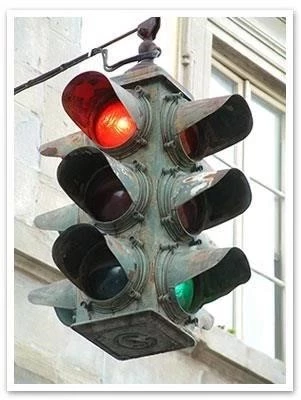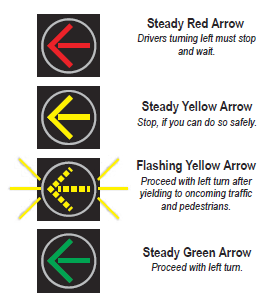In the ever-evolving landscape of road safety, the flashing yellow arrow (FYA) is a relatively new addition that has sparked curiosity and a need for understanding among drivers. This seemingly simple traffic signal plays a crucial role in enhancing the flow of traffic and improving safety at intersections. But what exactly does it mean, and how does it benefit road users?
The Genesis of the Flashing Yellow Arrow
The flashing yellow arrow was introduced as a part of a national effort to standardize traffic signals and improve intersection safety. Initially tested in select areas, the FYA has gradually become a common sight across the United States. Its design aims to reduce confusion and provide a clearer directive to drivers making left turns at intersections.
Decoding the Signal: What Drivers Need to Know
The flashing yellow arrow signifies that drivers are permitted to turn left, but must yield to oncoming traffic and pedestrians. It offers more flexibility than the traditional green arrow, which only allows left turns when the traffic is completely clear. Here’s a quick guide to understanding the different arrow signals:
- Solid Red Arrow: No left turn allowed. Stop and wait for the signal to change.
- Solid Yellow Arrow: The left-turn signal is about to change to red. Prepare to stop unless you are already in the intersection.
- Flashing Yellow Arrow: Proceed with caution. You may turn left, but must yield to oncoming traffic and pedestrians.
- Solid Green Arrow: Safe to make a left turn. Oncoming traffic is stopped.
Safety Benefits of the Flashing Yellow Arrow
The implementation of the FYA has demonstrated several safety benefits:
- Reduced Confusion: The FYA provides a clearer understanding of when left turns are permitted, reducing driver hesitation and indecision.
- Improved Traffic Flow: By allowing left turns during gaps in oncoming traffic, the FYA increases intersection efficiency and reduces congestion.
- Decreased Accident Rates: Studies have shown a reduction in left-turn-related accidents at intersections equipped with the FYA, as drivers are more aware of the need to yield.
Adapting to the Change

As with any change in traffic regulations, adapting to the flashing yellow arrow requires awareness and education. Drivers should familiarize themselves with the signal’s meaning and practice caution at intersections. Local transportation departments often provide resources and signage to help guide drivers in understanding and adhering to FYA signals.
Conclusion
The flashing yellow arrow is more than just a new traffic signal—it’s a step forward in making our roads safer and more efficient. By understanding and respecting the FYA, drivers contribute to smoother traffic flow and a reduction in accidents. So, the next time you approach an intersection with a flashing yellow arrow, remember: proceed with caution, yield when necessary, and drive safely.
In embracing this change, we pave the way for a future where road safety is paramount, and every journey is a safe one.


This was an enlightening article. Understanding the purpose and function of the flashing yellow arrow makes me feel more confident as a driver.
I appreciate how the article highlights the safety benefits of the flashing yellow arrow. It
I found this article very informative. The breakdown of the different arrow signals is especially helpful for new drivers who might be unfamiliar with these rules.
The article does a great job explaining the flashing yellow arrow. It clears up a lot of confusion I had about when it is safe to make a left turn at intersections.
The explanation provided in this article is clear and concise. It’s good to know that such measures are being taken to improve road safety.
Great read! I always wondered why some intersections have flashing yellow arrows and others don’t. This article answered all my questions.